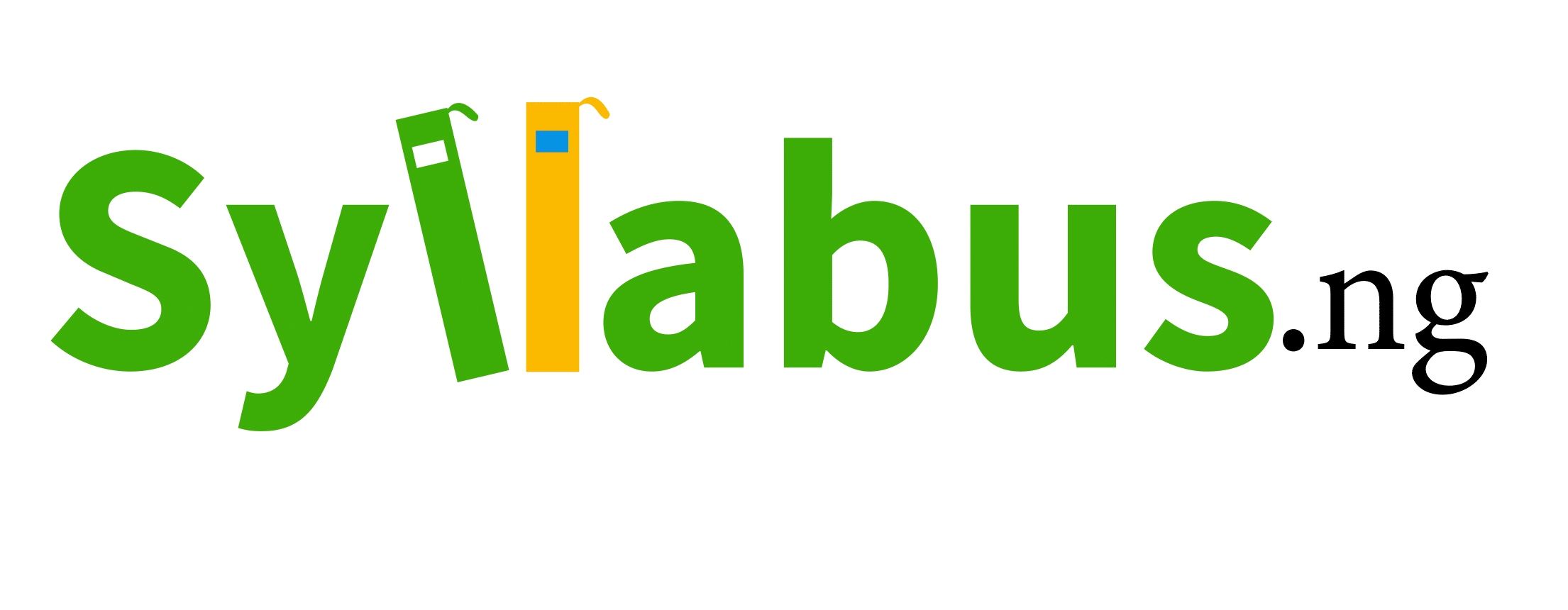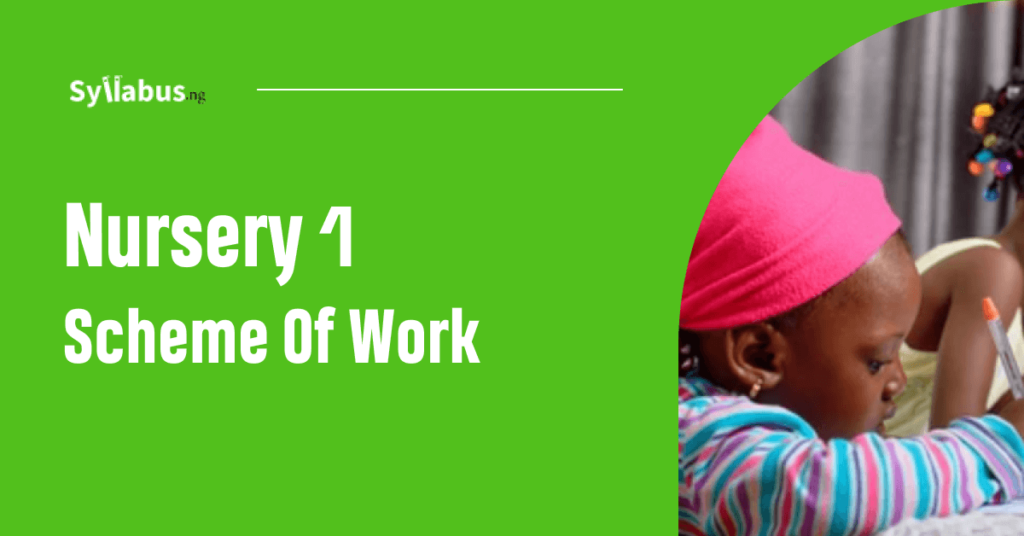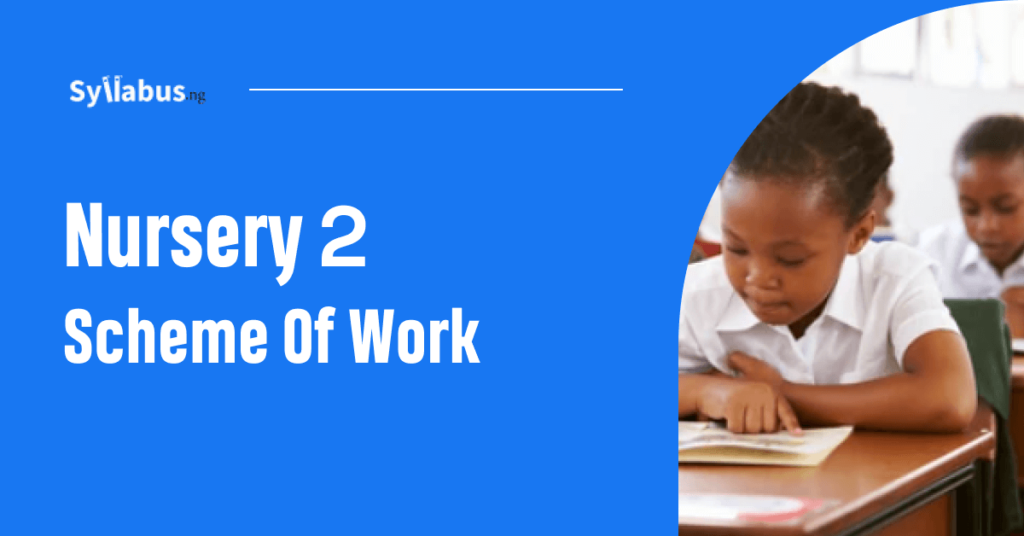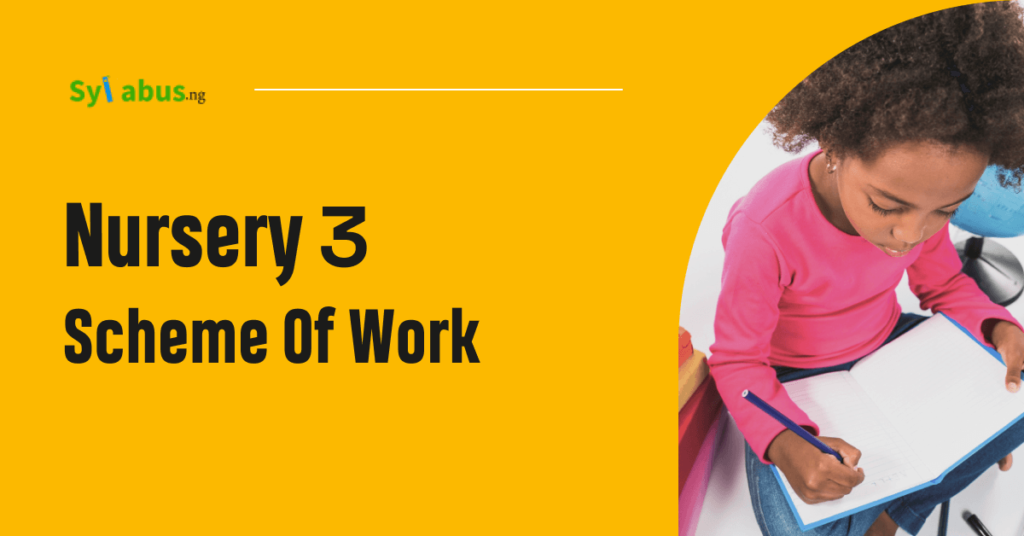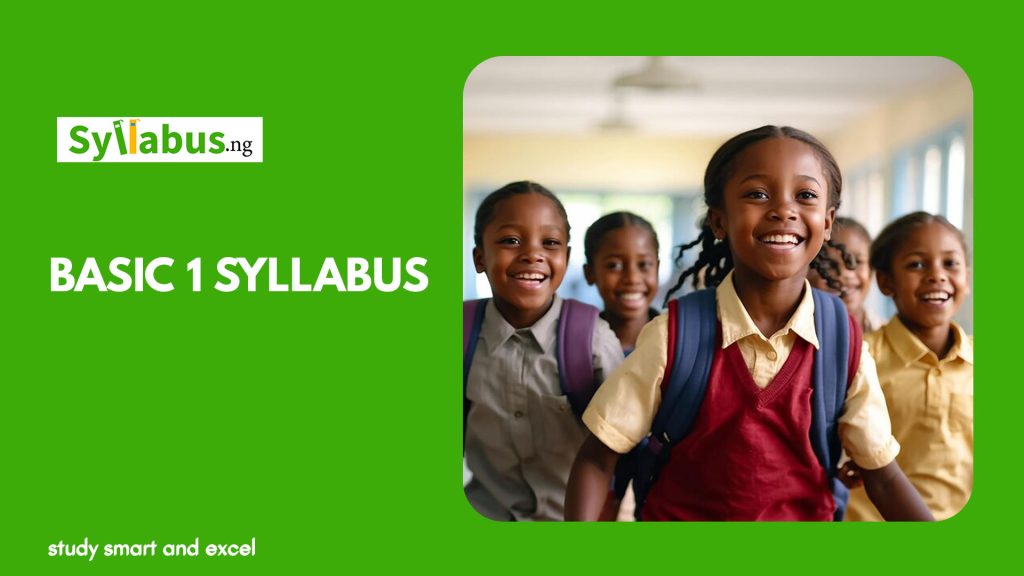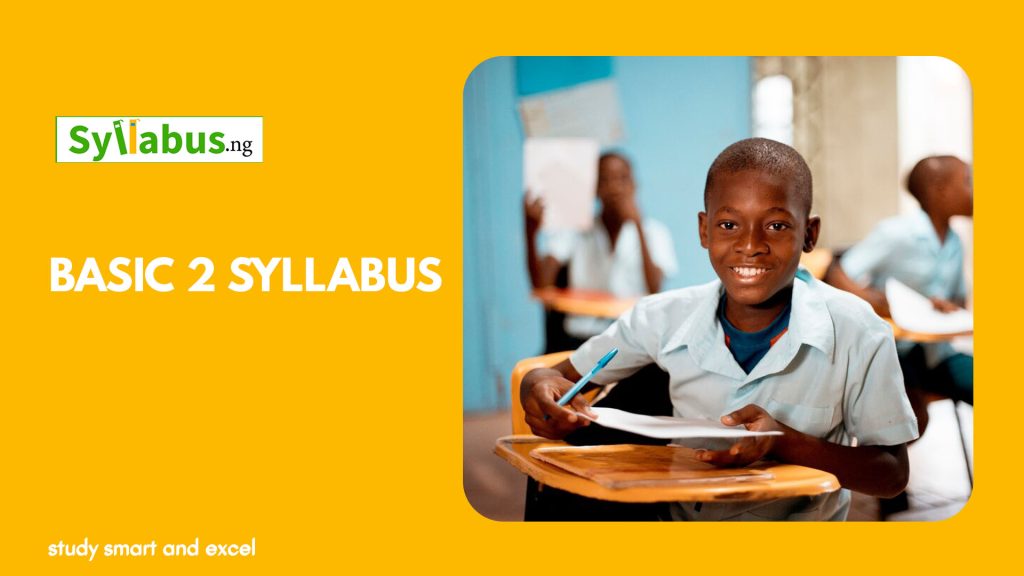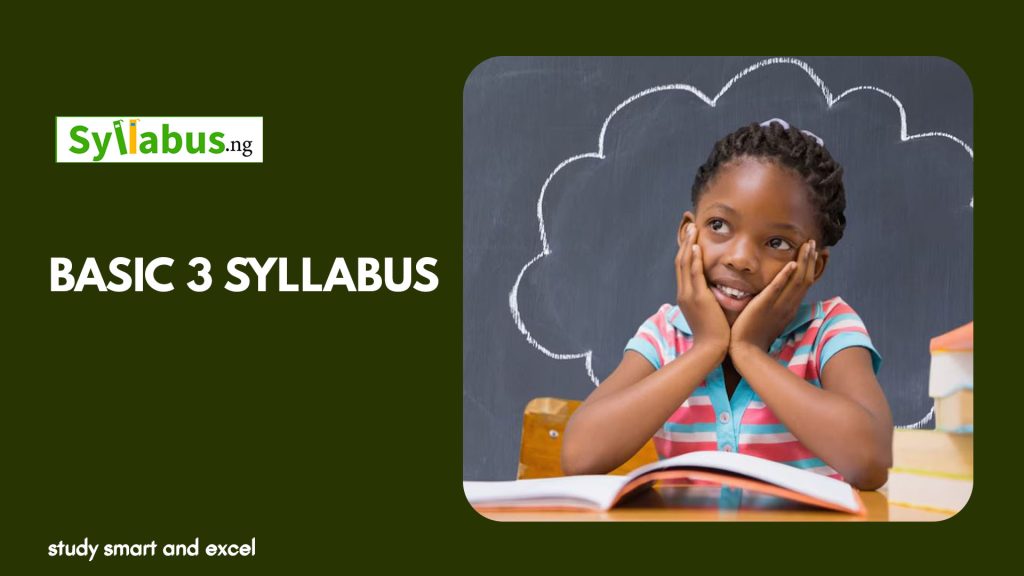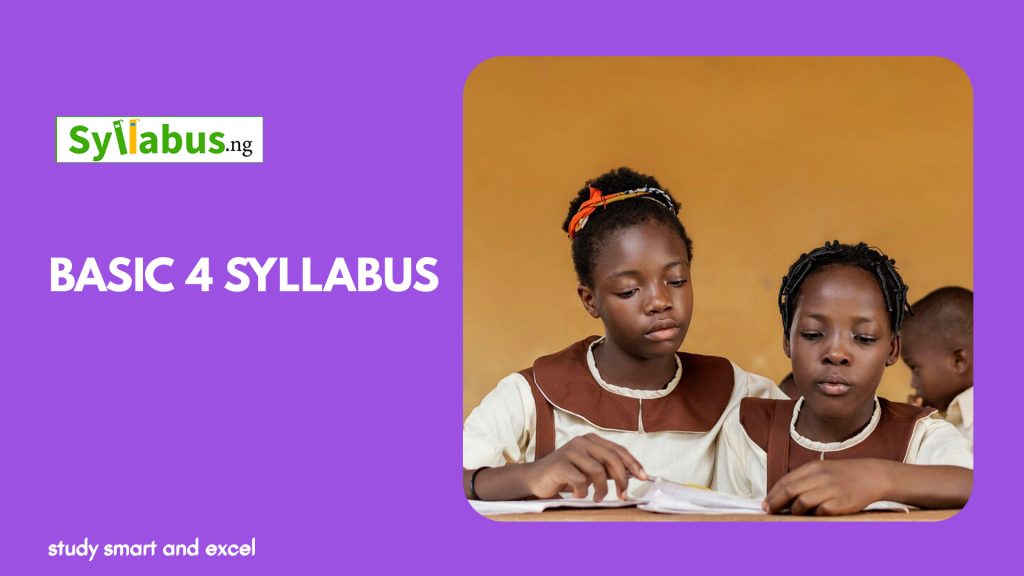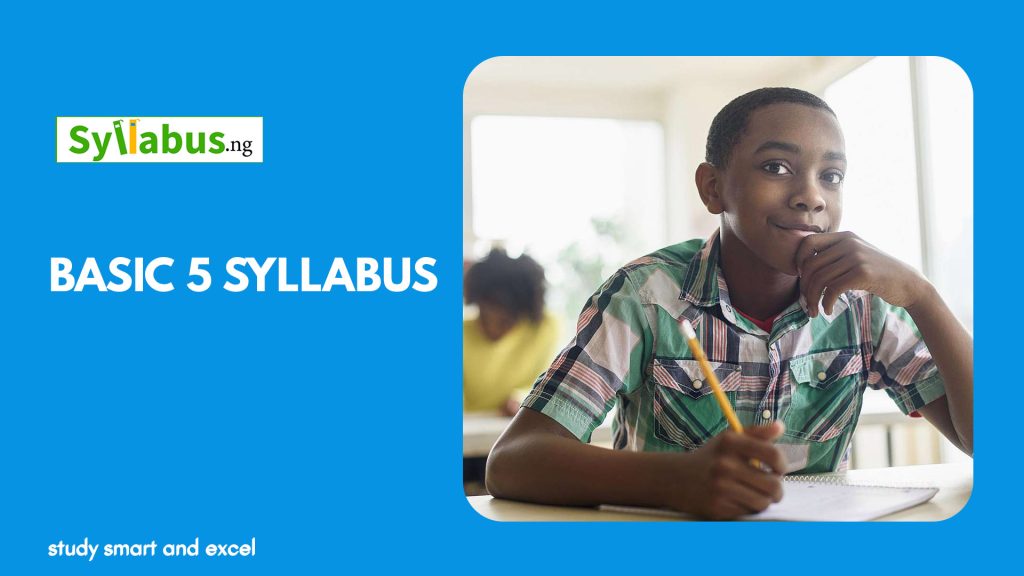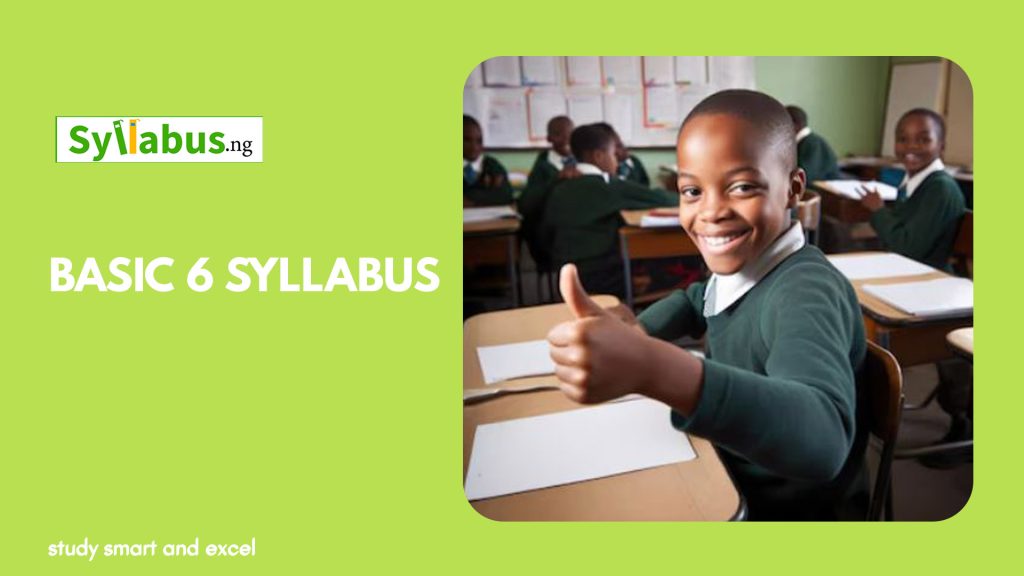Nursery 2 Literacy (Letter Work) Scheme of Work
Download the Nursery 2 Literacy (Letter Work) Scheme of work as created by the National Association of Proprietors of Private Schools(NAPPS) as a guide for educators and parents to teach kids.

Home » Nursery 2 Scheme of Work » Nursery 2 Literacy (Letter Work) Scheme of Work
Home » Nursery 2 Scheme of Work » Nursery 2 Literacy (Letter Work) Scheme of WorkAbout Literacy (Letter Work) Scheme of Work for Nursery 2
The Nursery 2 Literacy has two parts and this is one of them. This part titled Letter Work introduces young learners to the building blocks of written language.
Children are taught to understand letters and how each letter sounds. This knowledge forms the basis for reading and writing which is very important for all young learners.
In addition to letter recognition and sounds, children will also be taught phonics, letter formation, etc using fun and interactive activities to make learning fun.
By the end of Nursery 2, children will have a thorough understanding of the alphabet, including letter recognition, phonemic awareness, and letter formation. This strong foundation in letterwork will prepare them for a more advanced literacy as they grow.
Download Nursery 2 Literacy (Letter Work) Scheme of Work

Know what’s expected of you as an educator
Download the NAPPS Unified Scheme of Work for Nursery 2 Literacy (Letter Work)
Nursery 2 First Term Scheme of Work for Literacy (Letter Work)
| Source | NAPPS | |||
| Class | NURSERY 2 | |||
| Subject | LITERACY (LETTER WORK) | |||
| Term | FIRST TERM | |||
| Week | Topic | Teachers Activities | Pupil Activities | Learning Resources |
| 1 | SPEECH – Alphabets, Rhymes and Songs -Learning letter sounds and letters in lowercase: a – e | i. The teacher writes the sounds a – e on the board. ii. The teacher points at the sounds and pronounces the sound for pupils to hear. iii. The teacher guides the pupils to pronounce the sounds too. | i. Pupils listen attentively to the teacher. ii. Pupils make the sounds after the teacher and identify each sound. iii. Pupils identify and write the letters a – e in their notebooks. | Moveable alphabets, flashcards, and charts. Sound recorder. |
| 2 | SPEECH: Simple Instruction (Values). Alphabets -Simple instruction (values) -Alphabets -Simple stories and songs that portray honesty and transparency. -Learning letter sounds and letters in lowercase: f – j | i. The teacher tells simple-to-understand stories and helps pupils to understand and pronounce difficult words. ii. The teacher sings common songs and helps pupils to understand and pronounce difficult words. iii. The teacher writes the sounds on the board (also uses teaching aids like flashcards), points at each sound and makes the sound. | i. Pupils listen attentively to the teachers and ask questions. ii. Pupils make the sounds after the teacher and identify each sound. iii. Pupils identify and write the letters f – j in their notebooks. | Moveable alphabets, flash cards, story books, radio, TV tape recorder, etc. |
| 3 | READING AND WRITING: Picture reading and making free patterns -Picture reading and making free patterns -Picture reading. -Developing vertical and horizontal lines. | i. Teacher shows illustrative pictures to pupils. ii. The teacher forms simple sentences from the pictures. | i. Pupils identify objects in pictures. ii. Pupils study pictures carefully and attempt to make meaningful sentences from the pictures. iii. Pupils learn to write vertical and horizontal lines in their notebooks. | Writing books, pencils, eraser, crayon, pictures, posters, etc. |
| 4 | READING AND WRITING: Pattern making. Listening to music & rhymes. – Letter sounds. – Making free patterns. – Learning letter sounds and letters in lowercase: k – o. – Making slant stroke. | i. The teacher makes free patterns in pupils’ notebooks and guides them to trace the patterns and also write the patterns on their own. The teachercher writes the sounds on the board (also uses teaching aids like flashcards). iii. The teacher points at each sound and makes the sound. | i. Pupils listen attentively to the teachers and ask questions. ii. Pupils make the sounds after the teacher and identify each sound. iii. Pupils identify and write the letters k – o in their notebooks. | Moveable alphabets, flash cards, charts, writing books, pencils, erasers, etc. |
| 5 | WRITING AND SPEECH: Making patterns of different shapes. Parts of the body. – Learning names of body parts and identifying self (boy or girl). – Making running curves from bottom to top. – Making running curves top to bottom. | i. The teacher shows a chart of parts of the human body to the pupils and writes the body parts on the board. ii. Teacher helps pupils to identify the parts of their bodies. iii. The teacher makes curves in pupils’ notebooks and guides pupils to trace the curves. | i. Pupils pay attention to how the teacher makes the curves. ii. Pupils trace the patterns in their notebooks with teacher’s guidance and without teacher’s guidance. | Pictures, charts, concrete objects (learners), writing books, pencils, erasers, etc. |
| 6 | WRITING AND SPEECH: Making patterns. Body parts. Alphabets – Learning letter sounds and letters in lowercase: p – t. – Learning body parts (contd.). – Identifying wavy lines and tracing them. | i. Teacher shows a chart of parts of the human body to the pupils and writes the body parts on the board. ii. Teacher helps pupils to identify the parts on their own bodies. iii. Teacher makes wavy lines in pupils’ notebooks and guides pupils to trace the curves. | i. Pupils pay attention to how the teacher makes the wavy lines and trace the wavy lines in their notebooks. ii. Pupils identify wavy lines and differentiate them from other types of lines such as vertical lines, horizontal lines, etc. Pupils make the sounds after the teacher and identify each sound. iii. Pupils identify and write the letters p – t in their notebooks. | Moveable alphabets, flash cards, charts, writing books, pencils, erasers, etc. |
| 7 | READING, WRITING AND SPEECH: Picture reading. Alphabets. Making patterns. – Learning letter sounds and letters in lowercase u – z. – Describing simple stories. – Pattern making. | i. The teacher shows illustrative pictures to pupils and forms simple sentences from the pictures. ii. The teacher writes the sounds u- z on the board (also uses teaching aids like flashcards), points at each sound, and makes the sound. | i. Pupils identify objects in pictures and describe the pictures. ii. Pupils make the sounds after the teacher and identify each sound. iii. Pupils identify and write the letters u – z in their notebooks. | Moveable alphabets, flash cards, charts, writing books, pencils, erasers, etc. |
| 8 | WRITING AND SPEECH: Domestic animals. Objects in the home and school. Making patterns. – Learning names of domestic animals. – Learning some objects in the home. – Pattern making in horizontal stro | i. The teacher identifies some domestic animals drawn on charts or posters and helps pupils pronounce the names of the animals. ii. The teacher identifies some common objects in the environment and helps pupils pronounce the names of the objects. | i. Pupils pay attention to the teacher and identify the names of several domestic animals. ii. Pupils identify common objects found in the environment, pronounce the name correctly, and describe their uses. | Moveable alphabets, flash cards, charts,posters, writing books, pencils, erasers, etc. |
| 9 | READING AND WRITING: Picture reading. Making patterns. – Picture reading of objects and animals. – Pattern making in slant form from left to right. – Naming of objects. – Pattern making in slant form from right to left. | i. The teacher shows illustrative pictures to pupils, forms simple sentences from the pictures, and describes any actions being portrayed in the picture. ii. The teacher makes slant lines on the board for pupils to see. iii. The teacher also draws slant lines in pupils’ notebooks for them to trace and then write on their own. | i. Pupils identify objects in pictures and describe the pictures. They also describe actions being portrayed in the pictures using their own words. ii. Pupils make trace slant lines in their notebooks. They also write slant lines in their notebooks with the teacher’s guidance and without the teacher’s guidance. | Real objects, posters, pictures, charts, writing books, etc. |
| 10 | SPEECH AND WRITING: Music and poems. Alphabets. Making patterns. – Listening to music. – Reciting poems. – Pattern making: horizontal with vertical lines. – Reciting and identifying alphabets a – z. | i. Teacher sings common songs and helps pupils to understand and pronounce difficult words. ii. The teacher makes vertical and horizontal lines on the board for pupils to see. iii. The teacher also draws vertical and horizontal lines joined together. iv. The teacher makes the lines above-mentioned in pupils’ notebooks for them to trace and draw on their own. | i. Pupils listen attentively to the teacher and participate in the activities. ii. Pupils make the sounds after the teacher identifies each sound, and write the letter sounds a – z in their notebooks. iii. Pupils trace the patterns. iv. Pupils draw the pattern with the teacher’s guidance and without the teacher’s guidance. | Story books, writing books, pencils, erasers, VCD, television, etc. |
| 11 | REVISION | |||
| 12 | EXAMINATION | |||
Nursery 2 Second Term Scheme of Work for Literacy (Letter Work)
| Term | Second Term | |||
| Week | Topic | Teachers Activities | Pupil Activities | Learning Resources |
| 1 | READING AND WRITING: Alphabets (uppercase and lowercase) Aa – Bb. Making patterns. – Recognition and pronunciation of the letters Aa and Bb. – Tracing and writing of the letters Aa & Bb. – Making curves from left to right. | i. The teacher writes the alphabet Aa – Zz on the board and reads it aloud for the pupils to hear. ii. The teacher writes letters Aa and Bb in pupils’ notebooks for them to trace and also write on their own. iii. The teacher writes curves in pupils’ notebooks for pupils to trace and write on their own. | i. Pupils read the alphabets Aa – Zz. ii. Pupils trace letters Aa and Bb in their notebooks. iii. Pupils write letters Aa and Bb in their notebooks. iv. Pupils trace and write curves in their notebooks. | Tracing book, moveable alphabets, flash cards. |
| 2 | READING AND WRITING: Identifying letters of alphabets Cc – Dd. Making patterns. – Recognition and pronunciation of the letters Cc and Dd. – Tracing of letters Cc & Dd. – Making curves from right to left. | i. The teacher writes the alphabet Aa – Zz on the board and reads it aloud for the pupils to hear. ii. The teacher writes letters Cc and Dd in pupils’ notebooks for them to trace and also write on their own. iii. The teacher writes curves in pupils’ notebooks for pupils to trace and write on their own. | i. Pupils read the alphabets Aa – Zz. ii. Pupils trace letters Cc and Dd in their notebooks. iii. Pupils write letters Cc and Dd in their notebooks. iv. Pupils trace and write curves in their notebooks. | Picture books, charts, posters, sand tray, moveable alphabets, pencils etc. |
| 3 | READING AND SPEECH Identifying letters of alphabets Ee – Ff. Nursery rhymes and songs. Greetings. – Greeting at school e.g. Good morning, madam/sir. – Greeting at home e.g. Good morning daddy, etc. Simple instructions at school e.g. sit down, stand up, etc. Simple instructions at home e.g. welcome, come here, etc. – Tracing of letters Ee and Ff. | i. The teacher writes the alphabet Aa – Zz on the board and reads it aloud for the pupils to hear. ii. The teacher writes letters Ee and Ff in pupils’ notebooks for them to trace and also write on their own. iii. The teacher sings common songs and helps pupils to understand and pronounce difficult words. iv. Teacher demonstrates how to greet and the perfect responses to different greetings | i. Pupils read the alphabets Aa – Zz. ii. Pupils trace letters Ee and Ff in their notebooks. iii. Pupils write letters Ee and Ff in their notebooks. iv. Pupils recite poems and carefully pronounce difficult words. v. Pupils engage in greeting sessions by greeting the teacher greeting their classmates and responding accurately. q | Poetry books, musical instruments, charts, games, (wood cards), posters, song/rhyme books, videos. |
| 4 | READING AND WRITING: Identifying letters Gg – Hh. Making patterns. – Recognition and tracing alphabets Gg – Hh -vIntersecting and slanting lines. | i. The teacher writes the alphabet Aa – Zz on the board and reads it aloud for the pupils to hear. ii. The teacher writes letters Gg and Hh in pupils’ notebooks for them to trace and also write on their own. iii. The teacher draws slanting and intersecting lines for pupils to trace and draw on their own. | i. Pupils read the alphabets Aa – Zz. ii. Pupils trace letters Gg and Hh in their notebooks. iii. Pupils write letters Ee and Ff in their notebooks. | Colour crayons, pencils, writing books, charts, pictures etc. |
| 5 | READING AND WRITING: Identifying letters Ii – Jj. Storytelling. Daily routine. – Learning the daily routine e.g. greetings, prayers, bathing, brushing of teeth, etc. – Tracing and coloring of letters and objects (letters Ii – Jj). – Engage learners in storytelling. | i. The teacher explains the concept of daily routine to the pupils and helps them to pronounce the words more accurately. ii. The teacher writes the alphabet Aa – Zz on the board and reads it aloud for the pupils to hear. iii. The teacher writes letters Gg and Hh in pupils’ notebooks for them to trace and also write on their own. iv. The teacher tells simple-to-understand stories and helps pupils to understand and pronounce difficult words. | i. Pupils listen attentively and ask questions on daily routines. ii. Pupils read the alphabets Aa – Zz. They trace letters Ii and Jj in their notebooks. They also write letters Ii and Jj in their notebooks. iii. Pupils listen attentively to the teacher’s story and ask questions. | Charts, posters, song/rhyme books, tracing and colouring books, moveable alphabets, crayons, television, video CDs, etc. |
| 6 | READING AND WRITING: Identifying letters Kk – Ll. Pattern making. – Recognition and pronunciation of letters Kk and Ll. – Tracing of different patterns. – Making pre – writing skills (scribbles). | i.Teacher writes the alphabet Aa – Zz on the board and reads it aloud for the pupils to hear. ii. Teacher writes letters Gg and Hh in pupils’ notebooks for them to trace and also write on their own. iii. Teacher guides pupils to scribble in their notebooks. | i. Pupils read the alphabets Aa – Zz ii. Pupils trace letters Kk and Ll in their notebooks. iii. Pupils write letters Kk and Ll in their notebooks. iv. Pupils scribble with and without teacher’s guidance. | Pencils, charts, posters, moveable alphabets and books, writing books, television, video CDs, pencil, etc. |
| 7 | READING AND WRITING: Identifying letters Mm &Nn. Scribbling. – Recognition & pronunciation of letters Mm and Nn. – Tracing pictures of objects. – Slanting strokes. | i. The teacher writes the alphabet Aa – Zz on the board and reads it aloud for the pupils to hear. ii. The teacher writes letters Gg and Hh in pupils’ notebooks for them to trace and also write on their own. iii. The teacher guides pupils to scribble in their notebooks. | i. Pupils read the alphabets Aa – Zz. ii. Pupils trace letters Mm and Nn in their notebooks. iii. Pupils write letters Mm and Nn in their notebooks. iv. Pupils scribble with and without the teacher’s guidance. | Charts, posters, flash cards, moveable alphabets, television, video CDs, pencil, etc. |
| 8 | READING AND WRITING: Identifying letters Oo – Tt. i. Identification of letters Oo – Tt. ii. Tracing of letters Oo – Tt. iii. Matching letters with objects. | i. The teacher writes the alphabet Aa – Zz on the board and reads it aloud for the pupils to hear. ii. The teacher writes letters Oo – Tt in pupils’ notebooks for them to trace and also write on their own. iii. The teacher guides pupils to match letter sounds with their corresponding objects. | i. Pupils read the alphabets Aa – Zz. ii. Pupils trace and write the letters Oo – Tt in their notebooks. iii. Pupils match letter sounds to their corresponding objects. | Pencils, charts, posters, moveable alphabets, chalk, television, video CDs, etc. |
| 9 | READING AND SPEECH: Identifying Letters Uu – Ww. Stories and Rhymes. Lines. – Identification of letters Uu – Ww. – Nursery rhymes and songs. – Recognition and tracing horizontal strokes. | i. The teacher writes the alphabets Aa – Zz on the board and reads it aloud for the pupils to hear. ii. The teacher writes letters Uu – Ww in pupils’ notebooks for them to trace and also write on their own. iii. The teacher guides pupils to match letter sounds with their corresponding objects. | i. Pupils read the alphabets Aa – Zz. ii. Pupils trace and write letters Uu – Ww in their notebooks. iii. Pupils match letter sounds to their corresponding objects. | Pencils, story books, musical instruments, charts, posters, rhyme books, moveable alphabets, chalk, television, video CDs, pencil, etc. |
| 10 | READING AND WRITING Identifying Letters Xx – Zz. Making Patterns: Circle. – Identification of letters Xx – Zz – Making circular patterns. | i. The teacher writes the alphabet Aa – Zz on the board and reads it aloud for the pupils to hear. ii. The teacher writes letters Xx – Zz in pupils’ notebooks for them to trace and also write on their own. iv. The teacher guides pupils to match letter sounds with their corresponding objects. iv. The teacher draws the circular pattern in pupils’ notebooks for them to trace and draw on their own. | i. Pupils read the alphabets Aa – Zz. ii. Pupils trace and write letters Uu – Ww in their notebooks. iii. Pupils match letter sounds to their corresponding objects. iv. Pupils trace and draw pattern in their notebooks on their own. | Pencils, charts, posters, moveable alphabets, writing |
| 11 | REVISION | |||
| 12 | EXAMINATION | |||
Nursery 2 Third Term Scheme of Work for Literacy (Letter Work)
| Term | Third Term | |||
| Week | Topic | Teachers Activities | Pupil Activities | Learning Resources |
| 1 | SPEECH AND STRUCTURE: Matching uppercase letters with lowercase. Simple greetings and commands. – Identification of letters Aa – Zz (Upper and Lower Case). Greeting at school. Greetings at home. Identifying names/titles. – General greeting. | i. The teacher writes letters in lowercase and uppercase on the board and then matches them correspondingly. ii. The teacher demonstrates how to greet and the perfect responses to different greetings. | i. Pupils match lowercase letters with uppercase letters in their notes. ii. Pupils engage in greeting sessions by greeting the teacher greeting their classmates and responding accurately. | Word cards, Song/rhyme book, Storybooks, writing books, posters, charts, etc. |
| 2 | SPEECH AND WRITING: Matching letters Aa – Ee with pictures. Writing 2-letter and 3-letter words. Copying letters Aa – Ee. – Associating pictures with words. – Identifying and listing two-letter words – Practising correct writing skills. | i. The teacher writes the alphabet Aa – Zz on the board and reads it aloud for the pupils to hear. ii. The teacher matches letters Aa – Ee with pictures and helps students to pronounce words correctly. iii. The teacher helps pupils to write two-letter and three-letter words at random. | i. Pupils write letters Aa – Ee with pictures and learn to pronounce words correctly. ii. Pupils write two-letter words and three-letter words. They also learn to pronounce the words correctly. | Pictures books, flash cards, writing books, chart, etc. |
| 3 | SPEECH AND WRITING: Matching letters Ff – Jj with pictures. Copying letters Ff – Ii. – Associating pictures with words. – Writing 2-letter and 3-letter words. | i. The teacher writes the alphabet Aa – Zz on the board and reads it aloud for the pupils to hear. ii. The teacher guides pupils to write letter sounds. | i. Pupils write letters Aa – Ee with pictures andlearns to pronounce words correctly. ii. Pupils write two-letter words and three-letter words. They also learn to pronounce the words correctly. | Moveable alphabets, moveable shapes, charts, pictures, Writing books, crayons, etc. |
| 4 | SPEECH Matching letters Jj – Oo with pictures. Storytelling, songs & rhymes. Copying letters Jj – Oo. – Associating pictures with words. – Telling simple stories, singing songs & rhymes. | i. The teacher writes the alphabets Aa – Zz on the board and reads it aloud for the pupils to hear. ii. The teacher guides pupils to write the letter Ii – Oo correctly and match them to pictures. iii. Teacher sings common songs and helps pupils to understand and pronounce difficult words. | i. Pupils listen attentively to the teachers and ask questions. ii. Pupils write and read letters Aa – Zz. iii. Pupils make the sounds after the teacher and identify each sound. iv. Pupils match letters Ii – Zz to pictures. | Charts, pictures and storybooks. Radio. Sound recorder. |
| 5 | SPEECH AND WRITING: Matching letters Pp – Tt with pictures. Picture reading. Songs and rhymes. Copying letters Pp – Tt. – Associating pictures with words. – Picture reading. – Singing songs. -Reciting rhymes. | i. The teacher writes the alphabet Aa – Zz on the board and reads it aloud for the pupils to hear. ii. The teacher guides pupils to write the letter Pp – Tt correctly and match them to pictures. iii. The teacher sings common songs and helps pupils to understand and pronounce difficult words. | i. Pupils listen attentively to the teachers and ask questions. ii. Pupils write and read letters Aa – Zz. iii. Pupils make the sounds after the teacher and identify each sound. iv. Pupils match letters Pp – Tt with pictures. | Tape recorder, chats, pictures, flash cards, rhyme books and Television. |
| 6 | SPEECH AND WRITING: Matching letters Uu – Zz with picture words. Tracing. Copying letters Uu – Zz. – Associating pictures with words. – Guiding learners to trace & colour objects – Developing correct writing skills. | i. The teacher writes the alphabet Aa – Zz on the board and reads it aloud for the pupils to hear. ii. The teacher guides pupils to write the letter Uu – Zz correctly and match them to pictures. iii. The teacher sings common songs and helps pupils to understand and pronounce difficult words. | i. Pupils listen attentively to the teachers and ask questions. ii. Pupils write and read letters Aa – Zz. iii. Pupils make the sounds after the teacher and identify each sound. iv. Pupils match letters Uu – Zz with pictures. | Chalk, tracing books, crayons, writing books, charts, pictures, etc. |
| 7 | SPEECH, READING AND WRITING: Review: Matching letters Aa – Zz with pictures. Storytelling. Writing 2-letter and 3-letter words. – Associating pictures with words. – Guiding learners to read 2-letter and 3-letter words. – Telling simple stories | i. Teacher writes letters Aa – Zz in pupils’ notebooks for them to trace and also write on their own. ii. The teacher tells simple-to-understand stories and helps pupils to understand and pronounce difficult words. iii. The teacher guides pupils to write two-letter and three-letter words. | i. Pupils trace and write letters Aa – Zz in their notebooks on their own. ii. Pupils listen attentively to the teacher and ask questions on difficult words. iii. Pupils write two-letter and three-letter words in their notebooks and they read the words aloud. | Pictures, charts,posters, etc. |
| 8 | SPEECH, READING AND WRITING: Matching objects and their names and reading aloud. | i. The teacher draws different objects and writes their names e.g. A for Ant, apple, arrow. B for ball, bag, etc. | i. Pupils identify different objects and reads the names of objects. ii. Pupils match different objects with their names and pictures | Writing books, pictures, charts, storybooks, pencils, erasers, etc. |
| 9 | SPEECH AND WRITING Alphabets (Continued) Songs and rhymes. | i. Teacher guides learners to fill the missing alphabets A-Z, and to sing songs and recite rhymes.. | i. Pupils read the alphabet. ii. Pupils attempt exercises involving filling in missing alphabets. | Writing books, pictures, charts, storybooks, pencils, erasers, radio, VCD, etc. |
| 10 | SPEECH AND WRITING Objects and their names. Simple instructions and commands Matching objects and their names. | i. Guides learners to colour objects. ii. Guides pupils to understand and respond to simple instructions and commands. iii. Guides pupils to follow simple instructions and commands e.g. come here. Sit down, close your eyes, etc. | i. Pupils color specified objects among a collection of objects. ii. Pupils give instructions or commands to one another and then respond accordingly to the instructions and commands. | Writing books, pictures, charts, storybooks, pencils, erasers, etc. |
| 11 | REVISION | |||
| 12 | EXAMINATION | |||
Download Nursery 2 Literacy (Letter Work) Scheme of Work

Know what’s expected of you as an educator
Download the NAPPS Unified Scheme of Work for Nursery 2 Literacy (Letter Work)
